Homebuilt Aircraft - February 1981 - 1
- Details
- Category: Magazine Articles
- Published: Wednesday, 04 March 2009 15:39
- Written by Don Dwiggins
- Hits: 18982
Q2: THE NEW TWO-PLACE QUICKIE
60 MPG At 180 MPH = High Performance On Low Horsepower!
By Don Dwiggins
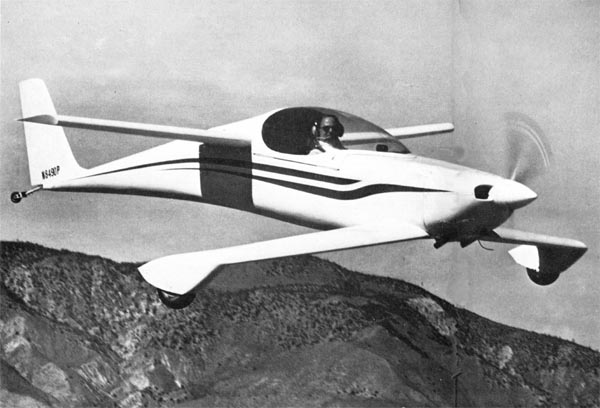 |
| Designer Gene Sheehan in cockpit of new Q2, a 180-mph two-place version of the Quickie, powered with Revmaster 2100-D. |
We had to see it to believe it. New prototype homebuilts all too often are launched with extravagant claims for performance, price and ease of construction that sound like election-year oratory. But Q2 is a two-place homebuilt that combines what every amateur constructor dreams of — short-field capability, 1000 fpm ROC, 750-mile range, ceiling above 17,000 feet — all that and good looks, too. Do I sound enthusiastic? I am.
The new two-placer is a grown-up, side-by-side, composite-construction, Q uickie-canard-planform aircraft designed for high performance on low horsepower with high efficiency. It’s based on the Burt Rutan design philosophy of excellence in advanced technology, though Burt didn’t even know about it until it was flying.
Flying formation with Gene Sheehan of Quickie Aircraft Corp. out of Mojave Airport, I had the opportunity to evaluate it from a wingspan away, if not in the right seat. Initial flight testing was still under way, and no passengers were yet allowed. I also had the opportunity to explore the confusion over the similarity between Q2 and Viking Aircraft’s Dragonfly.
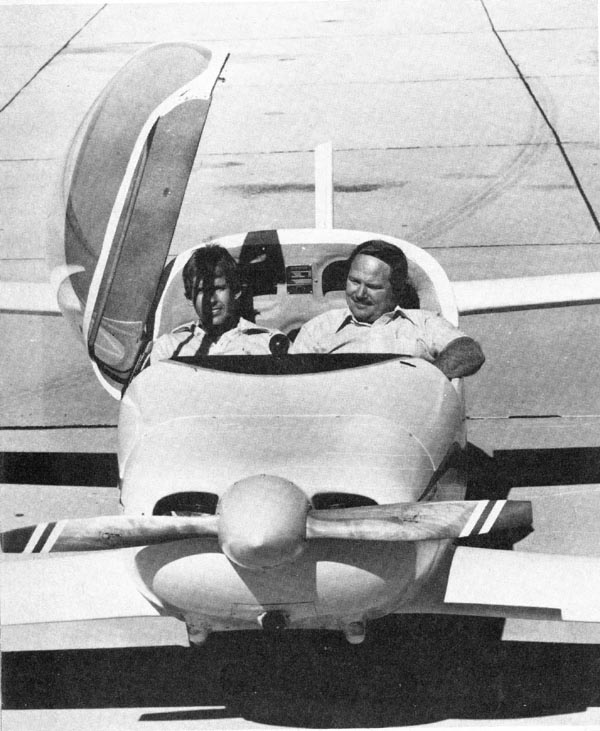 |
| Side-by-side seating in Q2 is possible with 43-inch cockpit width, the same as the Cessna 172. |
Gene and his partner, Tom Jewett, had launched their business in 1978 with the single-place Quickie, a Rutan design to match the Onan 18-hp engine. Prior to that Gene had helped build F-ills at Fort Worth, Texas, and Tom had been a flight test engineer on the Rockwell International B-1 bomber program, logging more than 75 hours in the multimillion dollar machine. Both men are highly qualified “aircrafters.” This is the story as related by Gene’s partner, Tom Jewett:
Jewett: “Q2s origin goes back to 1977, the same time we were developing the Quickie. Preliminary sketches of a two-place Quickie were drawn and discarded. In the fall of 1979 we started detailed design on Q2 after looking at a whole new idea — new ways of construction, new engines, modified airfoil sections — a whole new two-place airplane, and if it looked like the Quickie, that was fine. If it didn’t, that was fine too.
“We wanted to do the best job we could in creating a two-placer with cross-country capability, an aircraft very economical to build and maintain. We went through a dozen different engines, from little Onans to turbocharged Onans and the big Volkswagens.
“At Oshkosh ‘78, Gene and I had discussed the idea with our Canadian representative, Garry LeGare, who had had the same notion. Garry had already been looking around for good engines in Canada, and he asked us: ‘Wouldn’t it be neat if you guys could come up with something like this?’ We both were thinking along the same lines.”
In mid-1979, Tom and Gene firmed up their design program, and in February 1980 LeGare flew down to Mojave and got a go-ahead to start construction of the Q2 prototype.
Jewett continued: “It was Garry’s responsibility to build the prototype and make it all fit together and work, while our job was to support him on the design and engineering front. Building of the airplane was completed early in June after only four months’ construction time, but by the time we finished the load testing, completed for the Ministry of Transport in Canada, we were looking at July 1 for the first flight. That took place at Abbotsford, British Columbia, where we put eight hours on it.”
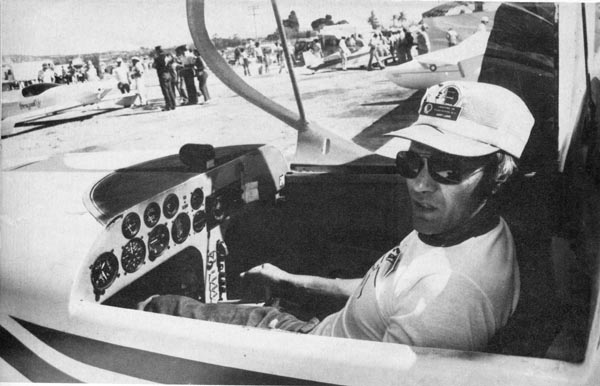 |
| Garry LeGare of Canada in cockpit of Q2, which he built in 4½ months to design specs of Jewett and Sheehan. |
The development program prior to actual construction involved considerable time in 1979. “We were of course highly satisfied with the airfoil in the Quickie program,” Jewett said, “but we wanted to see whether we could modify it to make it work even better on the Q2. We spent a lot of time driving up and down the runway here at Mojave in Gene’s pickup, with comparative airfoil sections stuck on top, photographing the separations evidenced in the tuft tests to determine the elevator deflections and angles of attack we could go to. We discovered that some rather subtle changes would make significant improvements over what we had on the Quickie.”
Tom and Gene’s car-top wing section testing differed considerably from Burt Rutan’s original car-top model testing of the VariViggen, which was instrumented in a highly sophisticated manner. Where Rutan used scaled- down, complete models, the Q2 program was designed simply to achieve good guidelines.
Jewett explained: “Our risk was low enough to start building the airplane first. You can spend so much time developing and checking things out that as a result you never really accomplish anything. The end result is what counts — get the thing flying and see whether it’s any good or not.”
Initial flight testing at Abbotsford, done in tight secrecy, convinced Tom, Gene and Garry that they should not take it off to Oshkosh ‘80. Says Jewett:
“After completing the basic flight testing we knew we had a stable airplane with good control, high- and low-speed characteristics. But we didn’t have a lot of hard numbers or enough time on the engine and airframe to satisfy ourselves. We decided to bring it down to Mojave after Oshkosh ‘80 and do a thorough development job down here.”
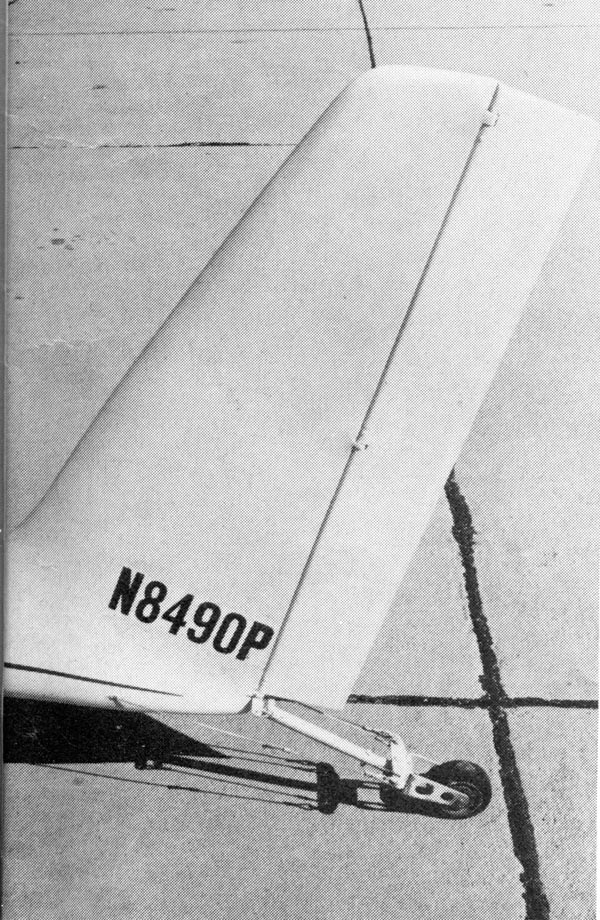 |
| The two-place Q2 has more rudder area than the single-place Quickie, but turns can be made with ailerons alone. |
One decision made early after the initial flight was to switch engines from a recently introduced modified VW to the proven Revmaster 2100-D, detuned to just under 65 hp. “Basically, we took the turbocharged Revmaster, removed the blower, and ran the rpms back down to 3200 where we got 63-64 horses instead of the 85 horses blown. We were more concerned with reliability than more power, which can come later on,” Jewett said.
The 2100cc Revmaster retails at about $3,000 and comes with dual ignition, starter, alternator, oil cooler, mixture control. It’s “a top-of-the-line, normally aspirated model,” as Tom described it. He said, “We put that engine on in August and have been very pleased with its performance.”
To get the project rolling, they hung on an off-the-shelf Great American Propeller Co. 52/47 club, but Tom says they plan to try out different propellers later on. They were getting 167-170 TAS at from 8000 to 10,000 feet, loaded to within 125 pounds of gross weight.
By September 1980 Tom, Gene and Garry had expanded all performance envelopes — flutter, CG, etc. — and were ready to unveil Q2 publicly at Tullahoma, at the big fall EAA show. “We heard that Dragonfly would be there; it already had been shown at Oshkosh, and we wanted everything out in the open so there could be no confusion later on.”
With 55 hours already on Q2, Garry flew it to Tullahoma. Tom and Gene flew chase in their Grumman Tiger. On a typical leg, Garry cruised at 155 mph TAS at 12,000 feet density altitude (DA), burning 3.6 gph, for 45 mpg. A few problems developed enroute, like fuel contamination from dirt in the tank, and the need to enrich the mixture for sea-level flying, as the engine had been tuned for flight at 5000 feet DA at Mojave. Daily flights were made at Tullahoma, but there was no opportunity to compare Q2 with Dragonfly because the latter failed to show up. On demo flights, Garry regularly lifted off in 500 feet and generally attracted much interest.
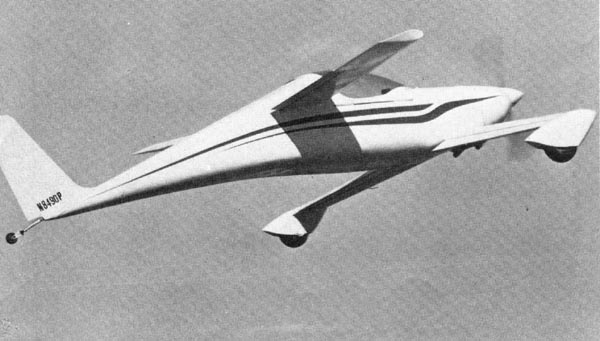 |
| Like a leaping porpoise, sleek new Q2 makes fast climbout from Mojave Airport. |
After Tullahoma, Q2 was returned to Mojave for further static load testing at utility category weight, with drop tests on which to freeze the landing gear design. The desired CG envelope was fully explored and achieved, and the desired gross weight reached. With full electrical system and radio, the empty weight of Q2 came out at 537 pounds.
“We now feel we can safely up the gross weight more, and we’ve already upped the top speed by a good 15 mph,” jewett stated. “Though it came out a trifle heavier than we’d expected
— 537 pounds with the extras or 490 pounds stripped — the CG envelope is much wider than we’d hoped for. We had thought we’d end up with a 165-170 mph airplane, but now we have a true 180-mph job. Running the numbers back through, we find we have a lower drag than any other two- place airplane known to us based on the engineering yardstick of Equivalent Flat Plate Area — the drag of an aircraft equated to a flat plate in an airstream, in square feet.
“Q2’s equivalent flat plate area is now 1.37, cleaner than the Glasair or the original VW-powered VariEze prototype, N7EZ. All those two-placers have flat plate areas around 1.4 to 1.5, and most homebuilt VariEzes seem to run around 1.6 to 1.7.”
Still not satisfied, the Q2 guys found many small areas where they could clean up the drag even more, for example, around the brake cables and wheel pant area. Further, they considered the cooling system overly effective. Jewett explained: “At cruise, the CHT is below 300 degrees C, and the oil temperature is down to 150 degrees C. We’re pumping too much air through the engine, and we’ll reengineer that a bit and also add fillets around the canard region.”
We asked Tom about Dragonfly, and he said he knew nothing about it until HOMEBUILT AIRCRAFT magazine called them to inquire about a “Two- Place Quickie” reported under construction in the EAA Chapter 40 Newsletter early in 1980. He replied: “Al Nelson of Viking Aircraft, builders of Dragonfly, came up to see us in mid- july 1980, but they didn’t know anything about Q2 then; it was up in Canada. We just didn’t want to talk about it until we were ready to let the public see it, the same as with our new Super Quickie back in the hangar. We won’t talk about that now.”
Tom and Gene were obviously curious about Dragonfly and checked back through their Quickie records. They found Nelson had purchased a set of Quickie plans, inventoried on December 15, 1978. “We checked with our attorney,” said Tom. “It turned out our plans are copyrighted, and a great deal of protection exists because of that copyright. Our attitude now is, wait and see what happens. We’re not bad guys, and we don’t care what anybody does with our plans for their own purpose.
“Back in Missouri, a guy is building a two-place Quickie powered with an 0-235. He called us for advice as he just wanted to have a two-place airplane like the Quickie, not to market it, just to fly it. That’s great — that’s what EAA is all about — you get a new technology, let’s develop a new aircraft.”
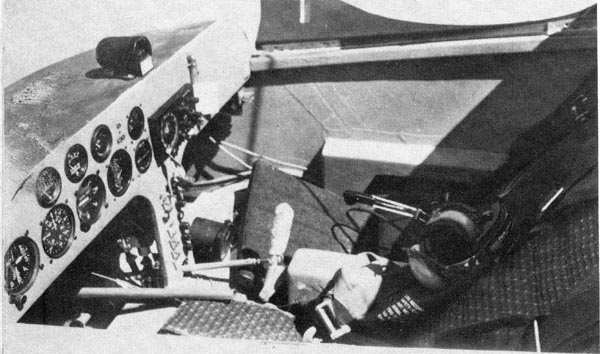 |
| Cockpit instrumentation is at left in two-place Q2, with center control stick, but dual controls can be installed. |
We asked Tom what effect introduction of Q2 might have on Quickie sales. He answered: “We expect there will be a drop-off in single-place Quickie sales while people sort out whether they want a single or two-place airplane. But also we expect that within a few months the single-place sales will come back up again. At Tullahoma, it was surprising how many people came up to look at both the Quickie and Q2. One guy said, ‘Q2 is nice, but I don’t need it — I always fly alone.’ But Q2 expands the overall market for homebuilts.”
Q2’s sales program is geared to start delivery of kits this winter — and plans as well — with a ballpark price for the kit Q2 of $8,995, including the $3,000 Revmaster engine — everything except paint and battery.
When we asked about going to higher power. Tom answered: “We may go blown later on, but we have to start someplace, as we did with the 18-hp Onan in the Quickie. Then we work our way up to see whether we can retain reliability. Everybody says the Revmaster is the Cadillac of the VW category engines, and in checking around, the only builders we found unhappy with the Revmaster simply had installation problems. Half the power problem is getting a reliable engine, and the other half is getting it set up so that it works reliably. If you run it at 450 degrees C CHT it’s not going to live; you’ll have to back down some, as in any other homebuilt aircraft.”
As to speed, Jewett explained that with the turbocharged version Q2 will easily go 230 mph. “The reason, of course, is that you can hold your power at a reasonable altitude, he explained. But we’re taking one step at a time. The Revmaster, you know, weighs 178 pounds, compared to around 140 to 145 pounds for most other VW conversions.”
Smaller, lighter and faster than Dragonfly, Q2 has equal span wing and canard — 16 feet 8 inches — with 66 sq.ft. of wing area, compared to 97 sq.ft. of wing area for Dragonfly, with a gross weight of 960 compared to 1075 pounds. This translates, incidentally, to a wing loading of 11.08 pounds/sq.ft. for Dragonfly and 14.54 for Q2, while the power loading of Dragonfly is 2.15 pounds/sq.ft. versus 15 pounds for Q2. Q2’s length is about 20 feet, 2 1/2 feet longer than Quickie’s, and it’s trailerable. Cockpit width is 43 inches, the same as Dragonfly’s, and a 6-foot-6- inch pilot can sit comfortably with three inches of headroom.
“Will you narrow the cockpit width in the future?” we asked.
“Why?” Tom smiled. “We’re actually afraid to — it works so well now! Besides, the extra width is a real plus, if you don’t lose that good performance.”
“Why didn’t you tell Burt Rutan about Q2 before it flew?” we then asked.
“He did know about it, after it had flown off the first eight hours in Canada. We told him then so he wouldn’t hear about it first from somebody else. We simply wanted to keep it secret until we had it flying, and we didn’t want to drag it around to all the air shows until we had the design firm. People still ask us why we took the fin off the tailwheel. Hell, we did that the week after the prototype first flew. It simply didn’t work out, and we already had a rudder.”
With 15 percent less wing area than the original Quickie prototype, N77Q, Q2 is a design going places — far and fast!



